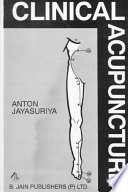

Most ebook files are in PDF format, so you can easily read them using various software such as Foxit Reader or directly on the Google Chrome browser.
Some ebook files are released by publishers in other formats such as .awz, .mobi, .epub, .fb2, etc. You may need to install specific software to read these formats on mobile/PC, such as Calibre.
Please read the tutorial at this link: https://ebookbell.com/faq
We offer FREE conversion to the popular formats you request; however, this may take some time. Therefore, right after payment, please email us, and we will try to provide the service as quickly as possible.
For some exceptional file formats or broken links (if any), please refrain from opening any disputes. Instead, email us first, and we will try to assist within a maximum of 6 hours.
EbookBell Team

4.4
62 reviewsThe barefoot doctor system still forms the backbone of the
medical services in rural China. In many backward areas of the
world such as countries in Asia, Africa and Latin America, and even
in the affluent countries with large rural areas cut off from the
population centres, the barefoot doctor experiment could be
adopted with a certain degree of success. A very large part of the
world’s population lives, in fact, in rural and sometimes inaccessible
areas where Western medicine, due to the constraints of its
sophistication, cannot easily be made available. The most potent
therapeutic weapon of the barefoot doctor is the acupuncture
needle. It is safe, simple, effective and economical, and can be
used by personnel after a short period of training. Acupuncture,
therefore, is the short term, as well as the long term answer, to
the health needs of the greater part of the Third World in many
everyday illnesses.
This is not to say that acupuncture should be used only in the
absence of Western medicine. Many people, even in the West, are
becoming more aware of the manifold and horrendous complications
of drug therapy, and are seeking alternative forms of therapy.
But a large quantity of drugs is still consumed as home remedies
in minor self-limiting illnesses like the common cold, tonsillitis,
insomnia, constipation, headache and gastro-enteritis. It is incumbent
for the cultured mind of today to have an elementary understanding
of acupuncture and to employ it in such common disorders,
before reaching for the bottle of pills.
Acupuncture is eminently applicable also in such modern situations
as submarine missions, off-shore oil rigs, polar research
missions and space travel*, where groups of workers are cut off
from the rest of the world, for prolonged periods.
This elementary book is written mainly as a guide to the barefoot
doctors of the world. It is hoped that it will also serve as a reference to every initiated person for methods of first aid in minor
and uncomplicated disorders. It is also directed at the Western
trained physician as a first step in understanding the methodology
of acupuncture, which can be usefully combined with scientific
medicine, to create a wide-spectrum weapon in the fight against
disease. In modern China the approach today is to combine
Western with traditional methods, both in diagnosis and therapy
(and this in fact is the approach of the teachers at the Academy
of Traditional Medicine in Beijing). The Western trained doctor will
find this approach particularly meaningful as the diseases discussed
in this book are in the terminology and semantics familiar
to him.
This book is the synthesis of the experience of treating a very
large number of patients daily at the Institute of Acupuncture of
the Colombo South General Hospital, and the teachings of the
great masters at the Academy of Traditional Medicine in Peking,
the Institute of Physiology, Shanghai, and other centres in the
People’s Republic of China, where I had the privilege to study. This
book, in fact, is a synopsis of the short teaching courses conducted
by us at the Institute of Acupuncture, Sri Lanka*.
I wish to place on record my grateful thanks to the World Health
Organization for the granting of a Fellowship in 1974 which resulted
in my obtaining the Diploma in Acupuncture in Peking, and
to the Foreign Office of the People’s Republic of China for invitations
in 1976, 1977 and again in 1979 to study the latest advances
in acupuncture therapy and anaesthesia in China.
To Professor Zhang Xiang-Tung of the Institute of Physiology,
Shanghai, a man for all seasons, who taught me the neurophysiology
of acupuncture, my special thanks for many helpful criticisms.